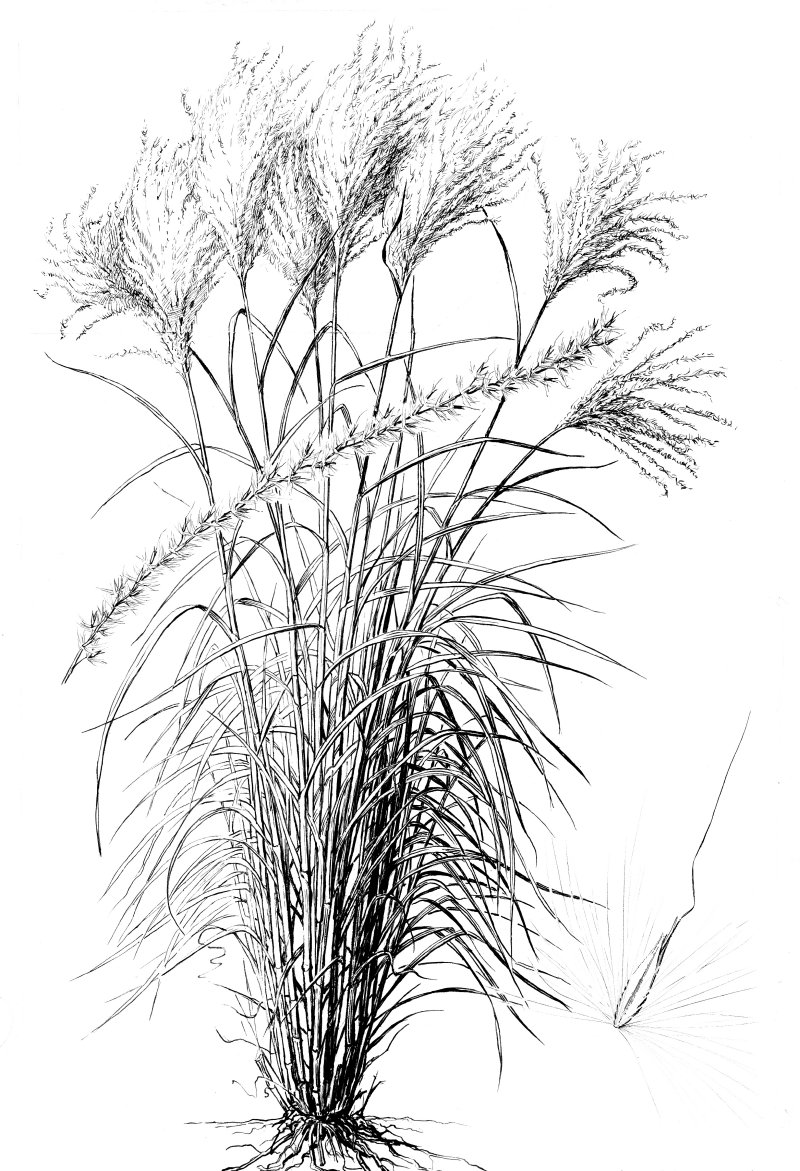
Miscanthus sinensis Anderss. Chinese Silvergrass Habit: Large densely tufted perennial. Culms: Robust in large dense clumps, erect 2-3 m. tall, with numerous, mostly basal leaves. Blades: Flat, up to 1 m. long, 8-12 mm. wide, arching, tapering to a slender point, margin sharply serrate. Sheaths: Longer than the internodes, somewhat flattened, ciliate. Ligule: 1-2 mm. long. Inflorescence: Terminal fanlike panicles of numerous, silky, aggregate, spreading, slender racemes, 10-20 cm. long. Spikelets: All alike, in pairs, unequal pedicellate along a slender continuous rachis, about 4 mm. long, surrounded by a tuft of silky hairs about as long as the glumes, inserted at the base of the spikelet. Glumes: About equal, membranous or somewhat coriaceous, the first flattened obtuse, second keeled, acute, ciliate on the margins. Sterile lemmas: Slightly shorter than the glumes, hyaline, 2-toothed, ciliate. Fertile lemmas: About equal to the sterile lemma, ciliate, deeply bifid with a twisted bent awn 6-7 mm. long from the sinus. Habitat: Cultivated for ornament and now growing wild in a few places in the eastern states. Kansas Range: Used freely in eastern half. Remarks: This is the grass which dominates many mountains in China, Japan, and the Philippines. Miscanthus sinensis variegatus Beal. A cultivated variety which differs from the species in having the blades striped with white. Miscanthus sinensis zebrinus Beal. The most commonly cultivated variety, which differs from the species in having the blades banded or zoned with white. Miscanthus sinensis gracillimus Hitchc. A cultivated variety which differs from the species in being a lower plant (usually less than 1 m. tall) and in having very narrow blades.